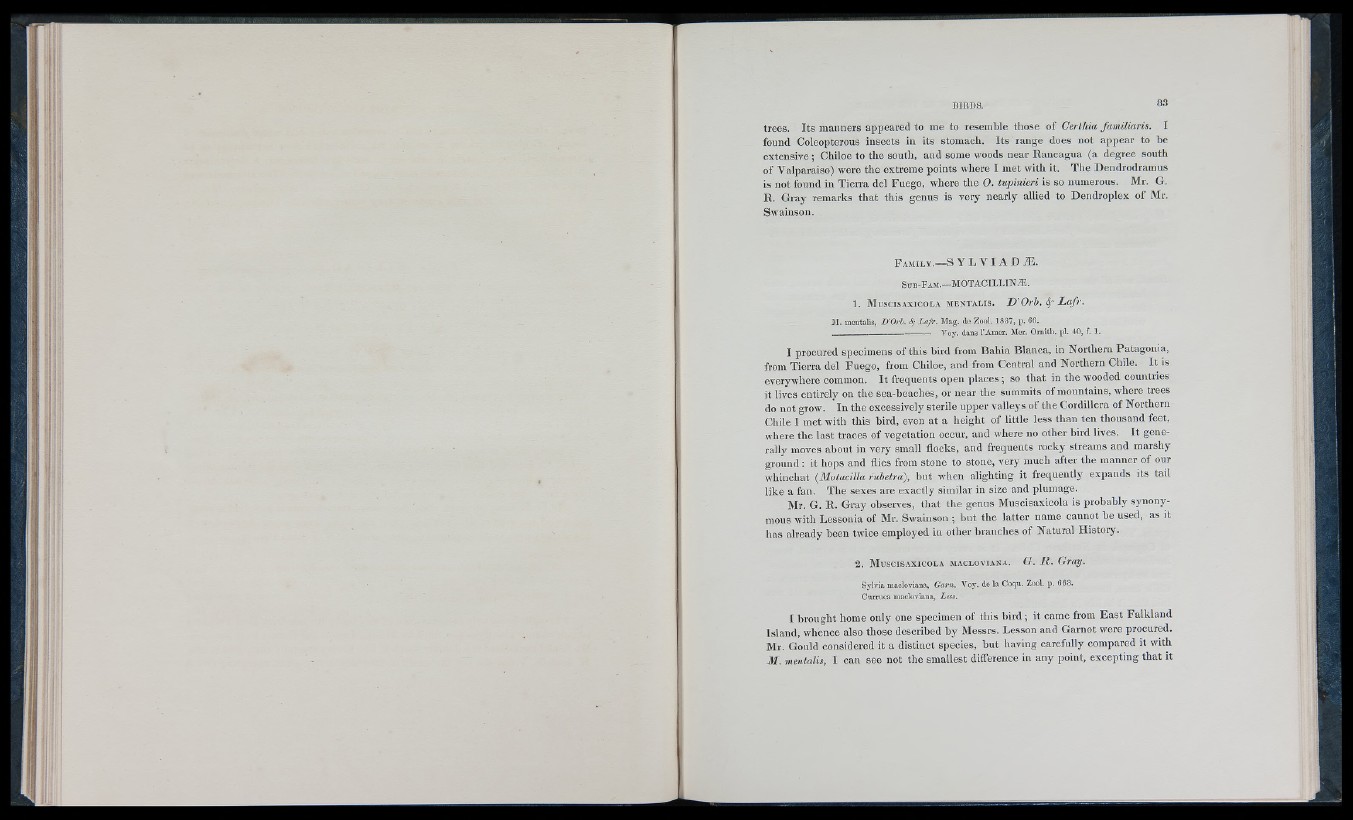
trees. Its manners appeared to me to resemble those of Certhia familiaris. I
found Coleopterous insects in its stomach. Its range does not appear to be
extensive; Chiloe to the south, and some woods near Rancagua (a degree south
of Valparaiso) were the extreme points where I met with it. The Dendrodramus
is not found in Tierra del Fuego, wliere the 0 . tupinieri is so numerous. Mr. G.
R. Gray remarks that this genus is very nearly allied to Dendroplex of Mr.
Swainson.
P a m i l V .— S Y L V I A D
S u b - F . \m .—M O T A C IL L IN iE .
1. MnsciSAXlcOLA MENTALIS. D'Orb. ij- Lafr.
M. luentalis, D'Orh. Sf Lafr. Mag. do Zool. 1837, p. 66.
________________________ Voy. dans I’Amer. Mer. Ornith. pi. 40, f. 1.
I procured specimens of this bird from Bahia Blanca, in Northern Patagonia,
from Tierra del Fuego, from Chiloe, and from Central and Northern Chile. It is
everywhere common. It frequents open places; so that in the wooded countries
it lives entirely on the sea-beaches, or near the summits of mountains, where trees
do not grow. In the excessively sterile upper valleys of the Cordillera of Northern
Chile I met with this bird, even at a height of little less than ten thousand feet,
where the last traces of vegetation occur, and where no other bird lives. It generally
moves about in very small flocks, and frequents rocky streams and marshy
ground : it hops and flies from stone to stone, very much after the manner of our
whinchat (JSIotacilla ruhetra), but when alighting it frequently expands its tail
like a fan. The sexes are exactly similar in size and plumage.
Mr. G. R. Gray observes, that the genus Muscisaxicola is probably synonymous
with Lessonia of Mr. Swainson ; but the latter name cannot be used, as it
has already been twice employed in other branches of Natural History.
2 . M u s c i s a x ic o l a m a c l o v ia n a . G. R . Gray.
Sylvia macloviana, Garn. Voy. de la Coqu. Zool. p. 663.
Citrruca macloviana, Less.
I brought home only one specimen of this bird; it came from East Falkland
Island, whence also those described by Messrs. Lesson and Garnot were procured.
Mr. Gould considered it a distinct species, but having carefully compared it with
Jlf. mentalis, I can see not the smallest difference in any point, excepting that it